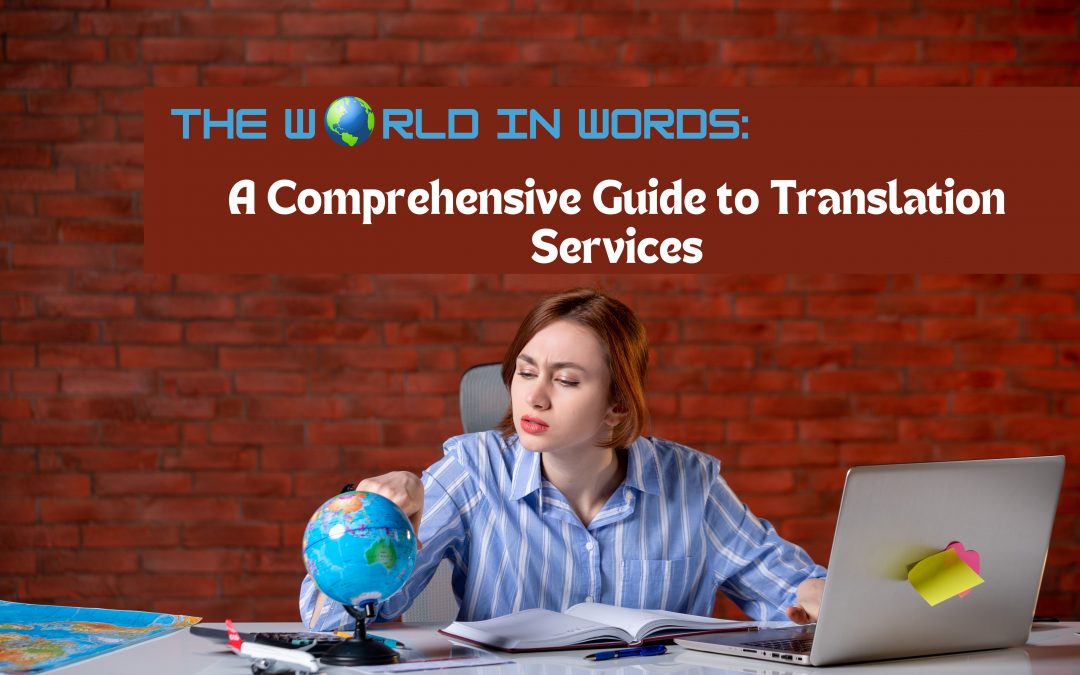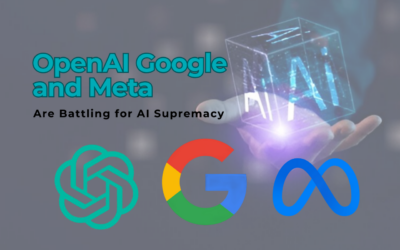As the world shrinks through increasing globalization, communicating complex ideas effectively between diverse languages grows pivotal for advancing international relations and global business markets. Translation services bridge linguistic and cultural gaps between people through specialized expertise conveying the context-preserved meaning of important documents, websites, media, conferences, and more to audiences otherwise disconnected sans bilingual interpreters clarifying essential nuances that technology alone still struggles to fully grasp.
What are Translation Services?
Translation services involve converting written or spoken content from one language (the source language) to another (the target language). It’s more than just replacing words; it’s about conveying the meaning, tone, and cultural nuances of the original message accurately and effectively. Translation services encompass a wide range of activities, including:
Document Translation:
Experts are adept in technical, legal, medical, and financial vocabulary and translate important paperwork, reports, manuscripts, specifications, and other printed materials into target languages preserving integrity.
Website Localization:
Adapting websites navigable across cultures requires adapting graphics, content structure, digital formats, and languages to engage unique audiences in their native tongues.
Software Localization:
Similar to websites, software interfaces and help manuals get translated such that instructions make intuitive sense supporting international commercialization serving wider demographics in preferred tongues.
Interpretation:
Oral translation enables fluid conversations through interpreters conveying dialogue meaning between parties communicating via different languages in real-time across conference calls, video meetings, international delegations, diplomatic assemblies, or medical discussions across doctors and patients unable to speak the same language.
Subtitling and Dubbing:
Replacing audio voiceover or adding captioned scripts below visual media like videos, films, and television programming dismantles access barriers for global audiences by translating narrations or dialogues into native languages seamlessly synchronized to onscreen movements.
Transcription:
Rendering accurate descriptions for images, symbols or verbal sequences like phone messages and spoken passages into written translated documents allows conveying meaning to appropriate reading levels or sensory formats attaining accessibility for the blind.
The Importance of Translation Services
Competent translation facilitates progress across:
Global Business:
Complex overseas transactions, international patents, tech specifications, sales/marketing collateral, and negotiations rely on flawless bilingual documentation exchange to secure partnerships and investments between foreign stakeholders.
International Relations:
Diplomatic mediations, immigration policies, world health initiatives, and humanitarian efforts depend on coherent communication chains accountability navigated by translators committed to non-biased delivery.
Education and Research:
Granting global scholars access to breakthrough research published internationally accelerates scientific advancement through shared learning. Translation assistance presents findings clearly for educating worldwide classrooms too.
Healthcare:
From patient intake questionnaires to prescription labels, medical interpretation shortens diagnosis times ensuring staff fully understand described symptoms, adherence practices, and health histories without misdiagnoses from language gaps. Such empathy and accuracy become literally life-saving.
Legal and Immigration:
Due process rights require native language accessibility. Court translators ensure non-citizens or non-English speakers equally participate in proceedings impacted by nuanced testimony technicalities influencing case outcomes.
Cultural Exchange:
Translators ameliorate exchange student transition anxieties, support travelers navigating new customs and norms abroad, and help new immigrants acclimate for smoothing relocation realities facilitating secure welcoming communities.
The Translation Process
Meticulous translation procedures ensuring accuracy include:
- Analysis of Source Text – First translators holistically examine entire documents assessing formatting complexities, target audience, emotional register, and technical aspects that dictionaries struggle to sufficiently handle alone.
- Research – Investigating industry contexts helps select vocabulary appropriately matching register levels without skewing meanings of terminology differentiated across derivatives like finance, medicine, and law requiring precision. Translators delve deeper wherever uncertainty around ambiguous phrasing exists.
- Translation Draft – Demonstrated language pair proficiency proves capability of accurately structuring context-appropriate sentences receptive to cultural nuances distinguishing neutral technical translations from expressive literary passages or conversational reports.
- Editing and Proofreading – Asking separate reviewers to scrutinize translated copies against initial materials confirms error elimination so nothing gets literally lost in translation before final distribution.
- Quality Assurance – Following best practice output guidelines coupled with testing evaluation metrics graded by independent language masters supports continually improving skills competent enough for certifications confirming capabilities.
Choosing Translation Services
Seeking translators matching communication formats means checking:
Expertise:
Industry specialization with proven track records of successfully executing similar past projects reduces error risks that generalists may overlook, especially for complex topics. Screen credential.
Language Pairs:
Rare dialect combinations often utilize relay translation through pivoting languages like English before finalization. Direct single hop flows typically quicken turnaround times and precision retaining cultural context subtly transmitted phonetically.
Quality Assurance:
Review screening methodologies should detail translator proficiency level, external editing by independent masters and productivity technology aids improving accuracy like integrated dictionaries and grammar tools.
Turnaround Time:
Processing outputs vary significantly across the above factors. Secure commitments aligning reasonable project complexity expectations relative to language pairs available on customary delivery timeliness refined by ongoing experience responding to client needs nimbly.
Cost:
While pricing usually correlates to quicker turnarounds, expert linguists, niche familiarity, and added service layers like apostilles or notarization, explore what base fees cover before assessing true value comparisons. Proposals distinguish vaguely hidden upselling.
Customer Service:
Responsive contacts willing to answer questions transparently until fully at ease signify partnering with professionals genuinely caring through guidance far beyond transactional exchanges.
The Future of Translation Services
Ongoing innovations steadily improve speed, scale, and access:
Machine Translation:
Artificial intelligence-powered apps provide instant basic translations unburdening humans from repetitive menial cross-checks of technical documents, especially helpful in transcribing long forms in bulk supporting human efforts. But mistakes still commonly confuse cultural contexts.
Neural Machine Translation (NMT):
Enhanced computing neural learning networks better grasp language structure complexities like slang, idioms, and typing conventions for matching human-quality translations of simpler texts within limited domains like hotel hospitality or e-commerce product listings. But perfection remains pending without context-aware common sense.
Cloud-Based Translation:
Online platforms centralize paid access granting translators enhanced productivity by seamlessly comparing terminology glossaries, preserving formatting and securely sharing confidential documents with clients. Software integration bolsters efficiency at scale.
Conclusion
The imperative for global collaboration through coherent communication sees translation services increasingly bridging linguistic divides influencing every sector as the worldwide community bounds closer through shared goals only achieved unified by understanding alone. Savvy partners source vetted subject matter experts to delicately convey context beyond replacing words, capturing culture woven between lines graspable only by equally fluent human intellect. Are accurate interpreters ready to relate your international narrative?












